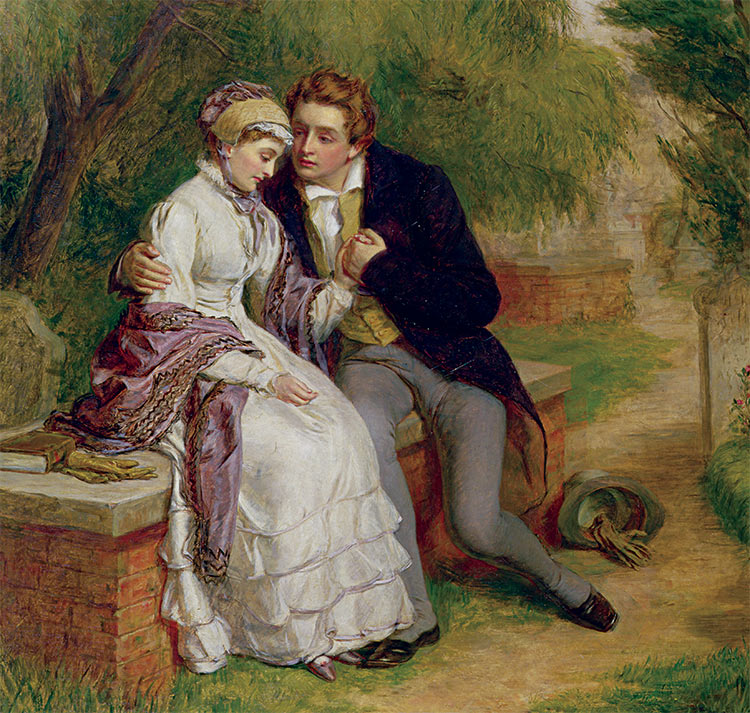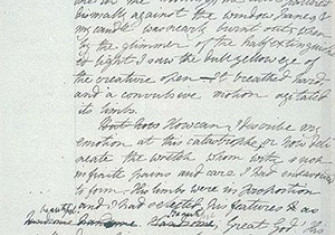Mary Shelley's Life of Learning
Behind the dominating presence of Frankenstein, the richness of Mary Shelley’s life is in danger of being lost.

During a gathering of radical young intellectuals, the teenage Mary Shelley was compelled to begin a tale of horror and scientific wonder. Her story became that of the creator and his monstrous creation, Frankenstein, published anonymously in January 1818.
Mary was born to literary parents: the pioneering feminist Mary Wollstonecraft and the political philosopher William Godwin. As a young woman, she eloped with her lover and eventual husband, Percy Bysshe Shelley, to the Continent in 1814, trekking through war-torn France with their companion Claire Clairmont, Mary’s stepsister. Two years later they returned to Europe once more, in the summer of 1816, and Mary began writing her first novel in Switzerland. The Frankenstein manuscript shows Percy, the older and more experienced writer, providing suggestions to enhance Mary’s work, offering constructive criticism and encouragement and showing a sincere appreciation for his partner’s literary skill. Both hands appear on the manuscript page.
In the popular narrative, however, the novel has been remembered as an emotional outlet for Mary, with Percy imposing himself on her writing. While Percy’s age (he was five years older) and education may have provided him with a slight advantage, their talents as writers emerged differently: Percy focused on poetry, Mary became a novelist.
The reciprocity of the Shelleys’ literary relationship can be seen in the textual connections between their works throughout their careers. They should be celebrated as a literary couple – that is, two authors who demonstrated the truly social nature of creativity.
Percy did have a hand in Frankenstein, but – in what the critic Neil Fraistat calls a ‘two-way collaboration’ – this was a mutually beneficial partnership; concurrently, Mary was the main copyist for his mature writings. Many of Percy’s poems also feature Mary as a central figure, but she is more than a static muse. In Laon and Cythna she is a ‘Child of love and light’ and the preface of the Witch of Atlas is addressed to a formidable critic of Percy’s emerging idealist style: ‘To Mary (On her objecting to the following poem, on the score of its containing no human interest).’
Soon after Frankenstein’s publication, the couple moved to Italy where they spent the remainder of their lives together. It was in that country where, in 1819-20, they wrote corresponding dark narratives on suicide, incest and revenge: Percy’s play The Cenci and Mary’s novella Mathilda. Elsewhere they collaborated more explicitly, by offering fragments of compositions to one another. ‘Proserpine’ and ‘Midas’, for example, are two dramas apparently written for children, composed by Mary in 1820, with four lyrics by Percy.
Among the works Percy composed during this period is The Mask of Anarchy, his response to the massacre in Manchester, dubbed ‘Peterloo’, a rallying cry recently adopted by the UK Labour Party in 2017: ‘Shake your chains to earth like dew ... / Ye are many – they are few.’ Here, Mary took on the role of amanuensis, as Percy hastily prepared the work for the press.
Mary’s retrospective editorial notes to her husband’s Poetical Works (1839) allude to the couple’s collaborations, validated by evidence from the extant manuscripts. In the surviving Mask of Anarchy papers, we can see Mary’s hand copying from Percy’s intermediate fair copy to the press copy, which Percy then goes over, making final corrections. Reciprocity is evident as Mary is involved in a creative exchange regarding Percy’s work, comparable to his revising the drafts of Frankenstein and discussing the composition of the novel with her.
As a woman born at the end of the 18th century, Mary had little formal education, although she was encouraged by her father to read and write from a young age. Her avid reading of her mother’s writings influenced her growth as a prolific author; Wollstonecraft penned A Vindication of the Rights of Woman and the novel Mary: A Fiction, among other works. Similarly, Percy’s presence encouraged Mary’s emerging literary expertise as she admired and championed his poetic genius. In their early years together, Mary welcomed Percy’s tutorage in languages, including Greek and Latin; but, as Jean de Palacio has shown, by 1818 she no longer needed Percy’s assistance and worked alone translating the classical writings of Livy.
The couple often shared the same paper for literary compositions and more idiosyncratic exercises. There is a worn little book, now held in the Library of Congress, used by both Shelleys from 1814 to 1818. It includes Mary’s translation of Apuleius and Percy’s review of his wife’s Frankenstein. Mary’s journal records not only their individual reading, but also the texts they read together, often aloud.
Over the course of her life, Mary wrote six novels and one novella, multiple travel narratives and several short stories. Her dedication to writing notes for and editing her husband’s posthumous editions is incredible – it was a colossal task. Without Mary’s work many of Percy’s poems would have been lost. Even before his death, she explicitly encouraged him to complete some poems he initially discarded, such as ‘Lines written among the Euganean Hills’.
Mary Shelley also enjoyed writing poetry in her later years. She kept a regular journal and was certainly an esteemed woman of letters. She died aged 53 at her home in Chester Square, London (a blue plaque marks the house). To celebrate 200 years since her ‘hideous progeny’, she should be remembered as an intellectual pioneer and a radical thinker.
Anna Mercer completed her AHRC-funded PhD in English Literature at the University of York in 2017. She is the author of The Literary Relationship of Percy Bysshe Shelley and Mary Wollstonecraft Shelley (Routledge, forthcoming).





